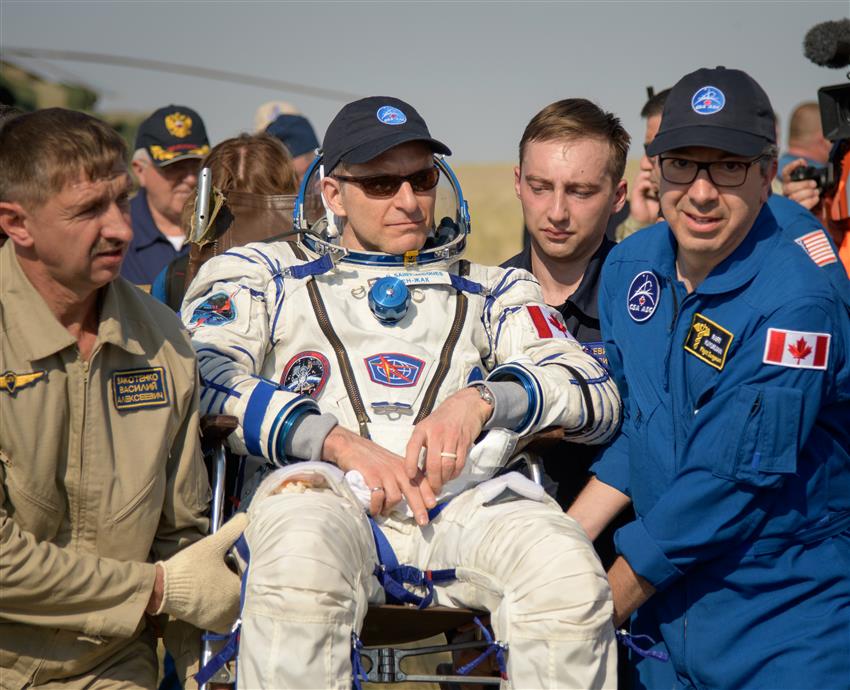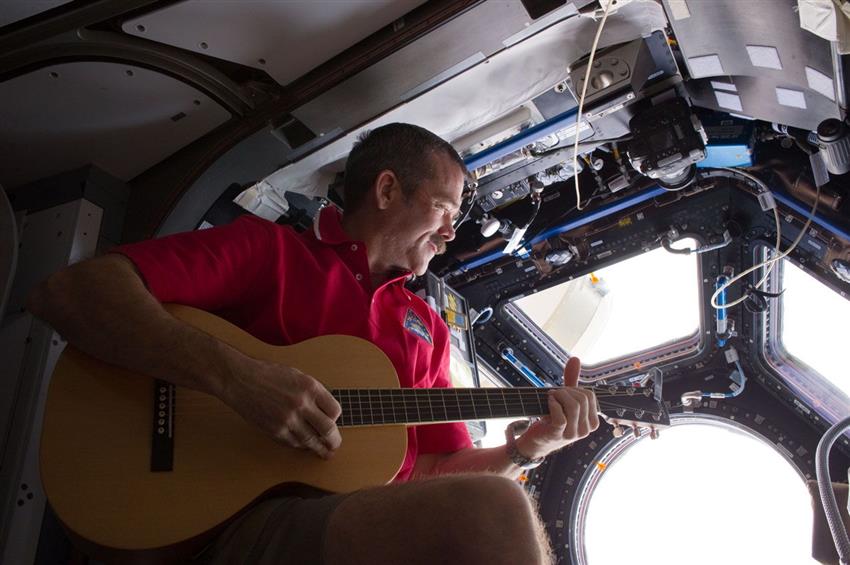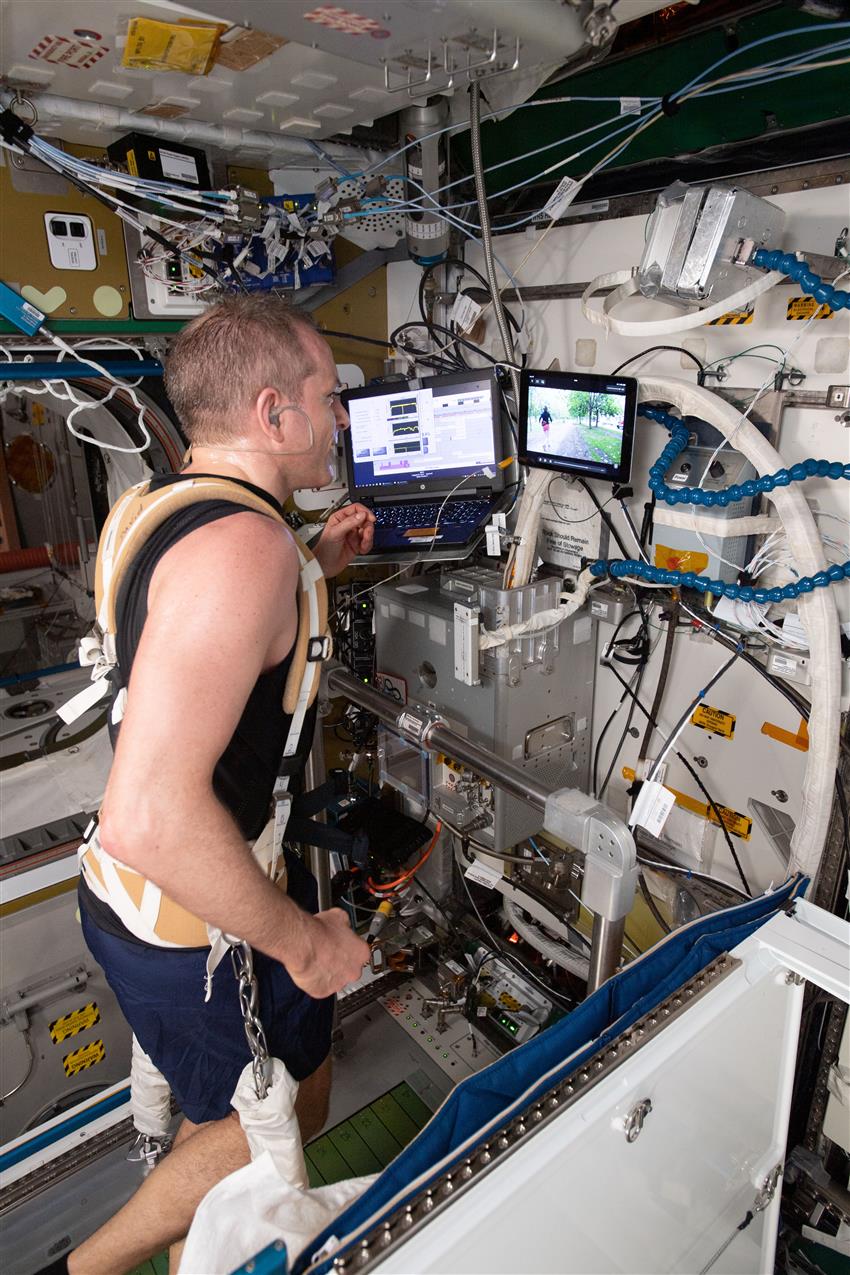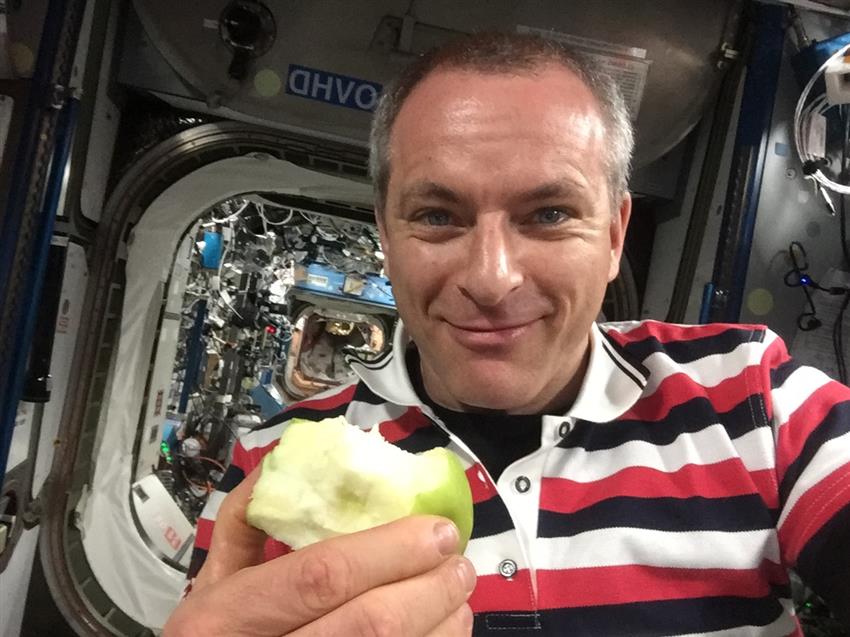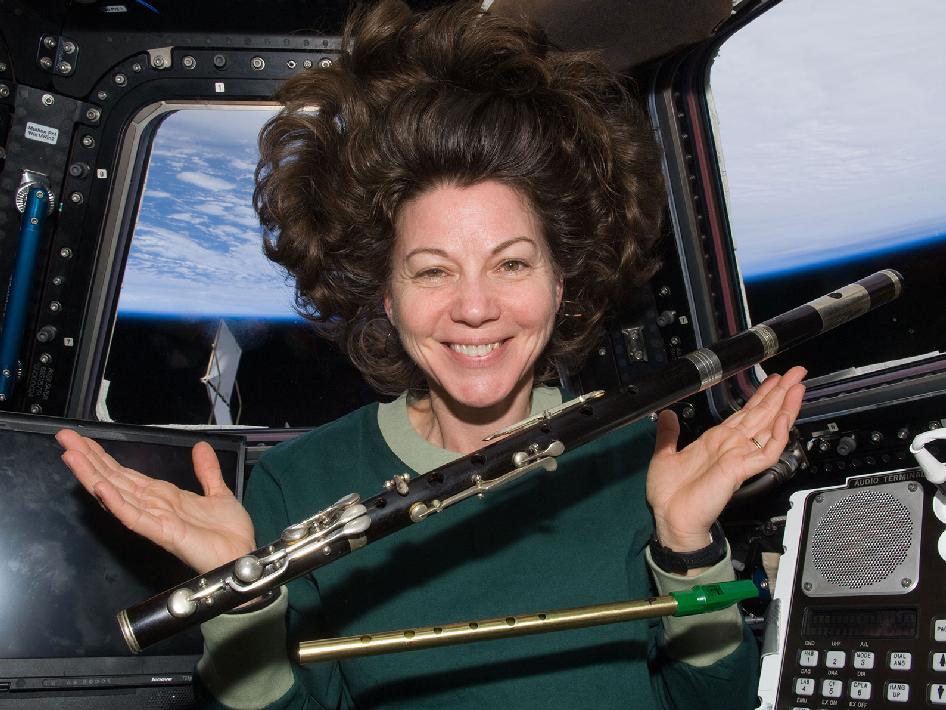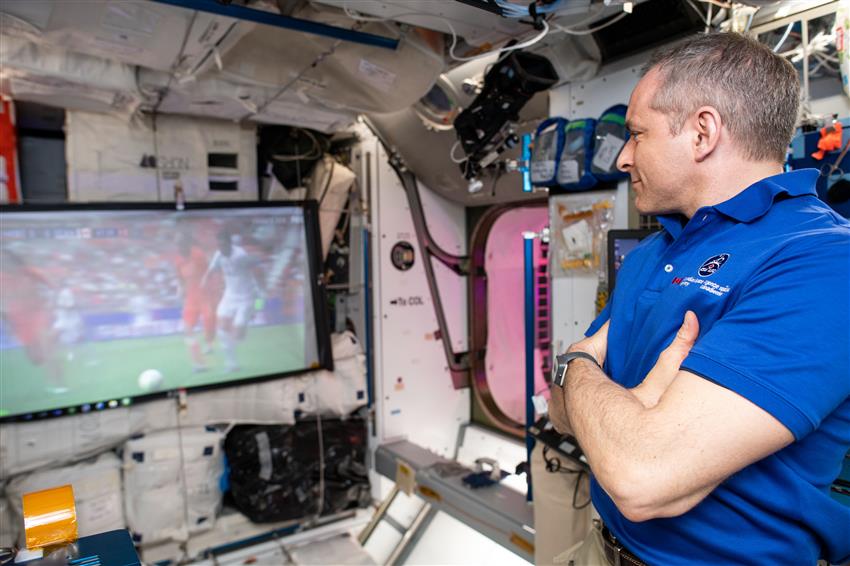How astronauts take care of their mental health in space
European Space Agency (ESA) astronaut Samantha Cristoforetti shares a few things that astronauts commonly do to care for their physical and mental health while aboard the International Space Station (ISS). (Credit: CSA/ESA/NASA)
Astronauts have a stressful, high-pressure job that can be mentally draining. Thankfully, there are various strategies, tools and training to help them stay mentally healthy. Some of these can help you cope with challenging situations here on Earth, too!
Physical activity: Astronauts exercise up to two hours each day using different devices. This is to counteract the adverse effects of space on the human body. However, countless studies show that being active and eating well have a positive effect on the mind as well.
Good sleep: If you've ever had a bad night's sleep, you have felt the effects of bad sleep: you feel grumpy, you can be a bit clumsy, you are not as productive and sometimes you can't focus at all. A prolonged lack of sleep can also lead to depression and other illnesses. Now think of the impact that this could have when living in a complex spacecraft in the dangerous environment of space. Astronauts aboard the ISS see 16 sunrises and sunsets a day. They also suffer from the lack of natural light, which also affects their sleep cycle. Special LED lighting, noise cancelling earbuds and sleep masks, cozy sleep pods and relaxation time built into their schedules help mitigate the risks of bad sleep in space. You can learn more about how light affects mental and physical health from our friends at Let's Talk Science.
Relaxation and self-care: As mentioned above, astronauts have downtime built into their schedules. A normal week in space is designed to mimic the astronauts' routine on Earth as much as possible, and consists of five days of work and two days of rest (although Saturday is also used for chores). During their time off, they often relax by watching Earth go by. Some read books, play an instrument or listen to music. They can connect with loved ones and spend time writing, meditating or practising their religious traditions.
Some astronauts have also taken to journaling. The idea is to give astronauts a safe space to vent their frustrations, provide an emotional outlet as well as give researchers a tool to study behavioral issues and help assess the mental and emotional states associated with life in long-term isolation and confinement.
ESA astronaut Samantha Cristoforetti talks about sharing meals and the importance of celebrations and holidays aboard the ISS. (Credit: CSA/ESA/NASA)
Social activities: In addition to technical training, astronauts prepare mentally for space through field expeditions as a team and individual training sessions.
Meals are another great opportunity to socialize and share different cultures. Crewmembers also gather to watch a movie, play board games, or celebrate special occasions like birthdays and holidays.
Training and preparation: En plus de leur formation technique, les astronautes doivent se préparer mentalement à aller dans l'espace grâce à des expéditions sur le terrain en équipe et des séances d'introspection.
Care packages – a touch of home! Care packages filled with sweets, little gifts, letters and birthday cards and reminders of home sent on resupply missions also help boost morale.
ESA astronaut Samantha Cristoforetti explains how receiving care packages from loved ones helps astronauts feel well. (Credit: CSA/ESA/NASA)
Environment: Keeping the spacecraft clean and organized, and following a schedule help create stability. Just like you decorate your room with items that make you feel good, astronauts bring photos and objects that remind them of home.
They also very much like growing plants and vegetables – it boosts morale and provides good nutrition and fresh oxygen. Some astronauts reported liking the fresh smell of pine when the crew was growing spruce seedlings for an experiment.
Technologies: Astronauts have access to devices with their favourite movies, shows, books, playlists, podcasts and audiobooks. Former CSA astronaut Chris Hadfield would receive recordings of the Maple Leafs game to watch while he was on the treadmill.
Internet phones and videoconference systems, and even virtual reality, allow astronauts to stay connected with family and friends on Earth. Technologies like smart watches and smart shirts track vital signs and sleep patterns, to help crewmembers manage stress and fatigue.
CSA astronaut David Saint-Jacques liked to read bedtime stories to his three children during his mission. It gave him and his family some sense of normalcy while he was away.
CSA astronaut David Saint-Jacques makes a phone call from the cupola of the ISS. (Credits: CSA, NASA)
What kind of psychological support do astronauts receive?
Canadian astronauts in space check in with a psychologist every two weeks and speak to their flight surgeon every two weeks.
A flight surgeon is not actually a surgeon, but rather a doctor with training and experience in aviation and space medicine. Flight surgeons make sure that astronauts are physically and mentally fit, and provide medical support to them during training and space missions. It is also their responsibility to advocate for a safe environment for the astronauts on Earth or in space, as well as provide post-flight rehabilitation to help them adjust to life back on Earth.
In addition to the flight surgeon, the CSA's Operational Space Medicine group provides support to the astronauts. Space medicine combines many medical specialties to examine the effects of spaceflight on humans and prevent problems associated with living in the unique, isolated, and extreme environment of space. Medical, exercise, nutrition, psychological support, and engineering teams work together to maintain the physical, mental, and social well-being of humans in space and upon return to Earth. This team is also there for the family of the astronaut in space, ensuring their well-being while their loved one is away for training and the mission.
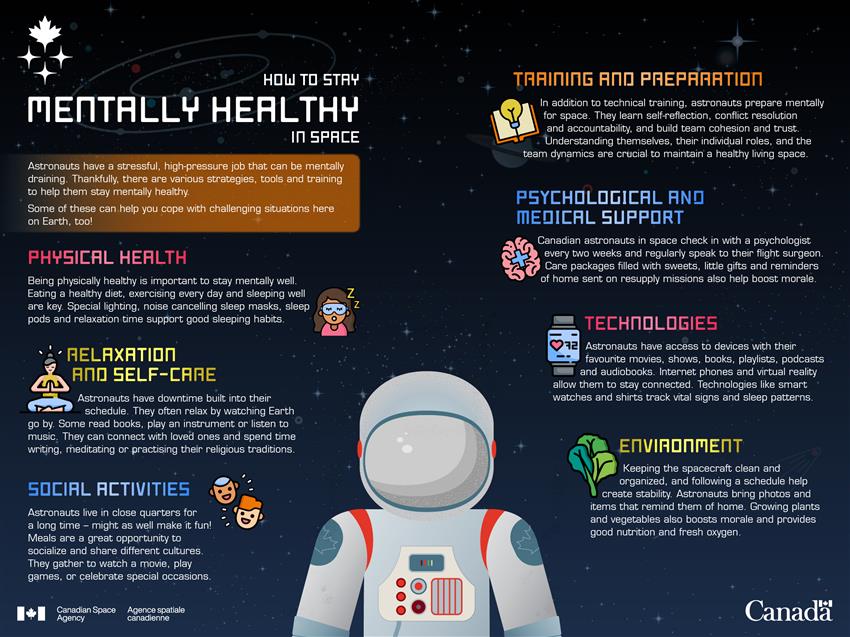
Infographic highlighting a few things that astronauts commonly do to care for their physical and mental health. (Credit: CSA)
Browse through these photos to see some of the things astronauts do to deal with mental issues or stay mentally well in space.
The future is now!
ESA astronaut Samantha Cristoforetti talks about the most difficult aspects related to mental health during future long-distance or long-duration missions. (Credit: CSA/ESA/NASA)
As you can see, a lot of effort goes into preserving astronauts' mental wellness, but more work needs to be done. As we prepare to venture for long periods farther into space, to the Moon and eventually to Mars, experts are thinking of innovations and ways for astronauts to feel connected to home. Some of these technologies seem to come straight from science fiction movies, but they are real!
- Stardust Technologies, a Canadian company based in Cochrane, Ontario, has worked in collaboration with the CSA and the National Research Council Canada on the EDEN project. EDEN creates a solution utilizing virtual reality, neural systems and haptic feedback in lunar, Martian, and other space environments to address the mental health needs of current and future astronauts. EDEN allows the astronaut to interact with people and Earth's environment to maintain a connection with their home planet.
Haptic means the use of technology to simulate the senses of touch and motion. In other words, this technology could allow astronauts to "touch" their loved ones from far away, which could create a great sense of connection.
- Virtual reality has a number of potential uses. It could help combat boredom through immersive games or movies. Astronauts could also feel immersed in nature. There have been many studies about how viewing nature scenes decreases stress, which could be even more powerful up in space where astronauts can't feel the wind and rain or smell earth. With VR sets, they could make their exercise sessions more beneficial by jogging through a virtual forest, hiking a mountain, or visiting any other place that they enjoy on the planet.
- American organizations working with NASA are imagining software and algorithms to advance understanding of human behaviour through wearable sensors.
- Others are developing a database of environmental stressors that will be the basis for machine learning algorithms that predict brain performance. In other words, NASA will be able to predict a potential decline in astronauts' cognitive performance and behavioral health with this technology.
- They are looking at technologies to improve sleep quality such as a smart headband that could be worn by astronauts while they sleep to emit inaudible slow waves.
- In , a team of doctors was "holoported" to the ISS during a test. You read that right! While it may seem like something straight out of Star Trek, the holograms of the doctors "visited" astronauts aboard the ISS. One of the doctors even greeted the astronauts with the famous Vulcan "live long and prosper" salute! (We love nerdy humour!)

Dr. Josef Schmid, NASA Flight Surgeon, salutes the crew in as he is holoported to the ISS. (Credit: ESA astronaut Thomas Pesquet)
- Speaking of scifi-type of communication, missions to Mars may use lasers to stay in touch with Earth. A laser communications system could send large amounts of real-time information and data, including high-definition images and video feeds. For example, NASA says that sending a map of Mars to Earth might take nine years with current radio systems, but as little as nine weeks with laser communications. The technology, which they proved possible with a demonstration from the Moon in , would also enable communication with astronauts on the red planet.
- ESA has already tested an AI-equipped robot, known as CIMON, that could eventually be used to help monitor and improve an astronaut's mood.
- La cuisSpace cooking using a 3D printer to prepare special food is also considered to help break the monotony of the normal space diet. The researcher's team even 3D printed a pizza to showcase the technology!
Can you imagine new solutions to help astronauts feel less isolated and more connected to our home planet? Take part in our Space Brain Hack (for grades 6 to 12)!
